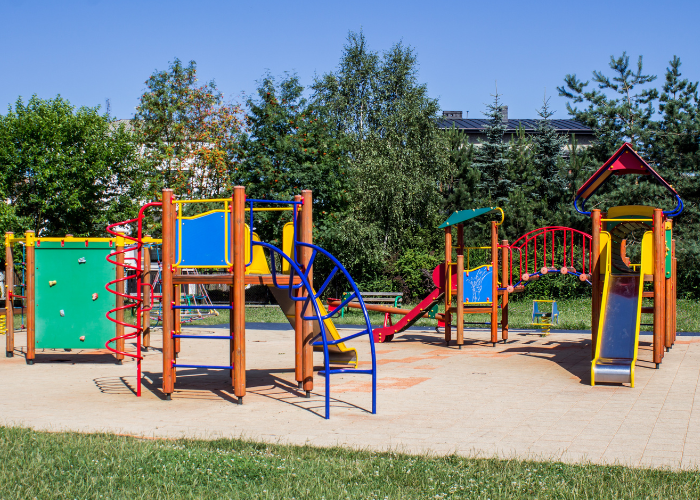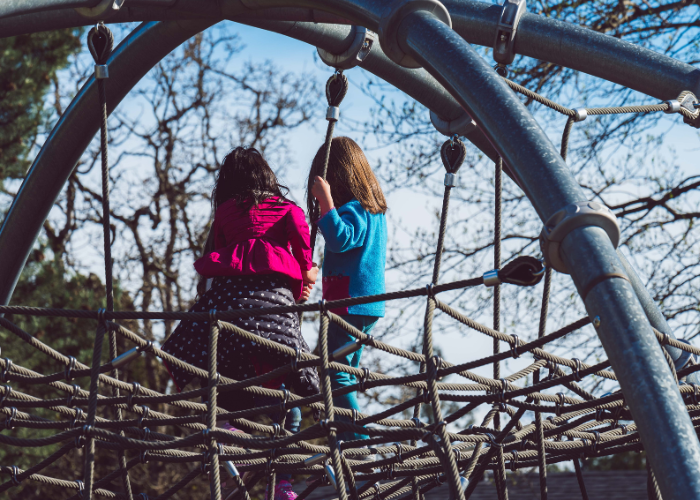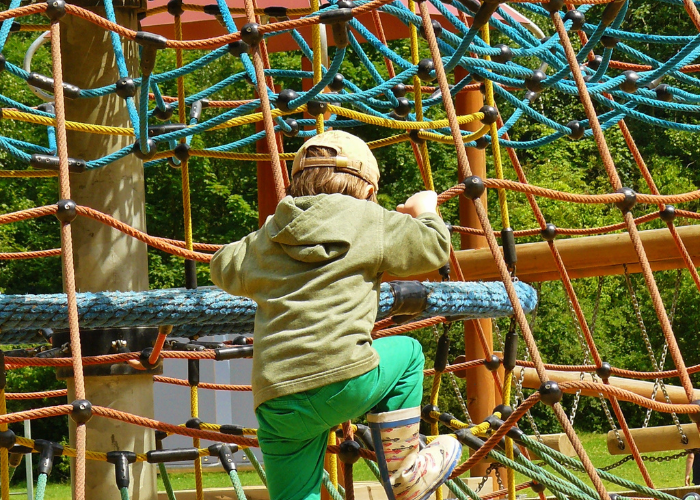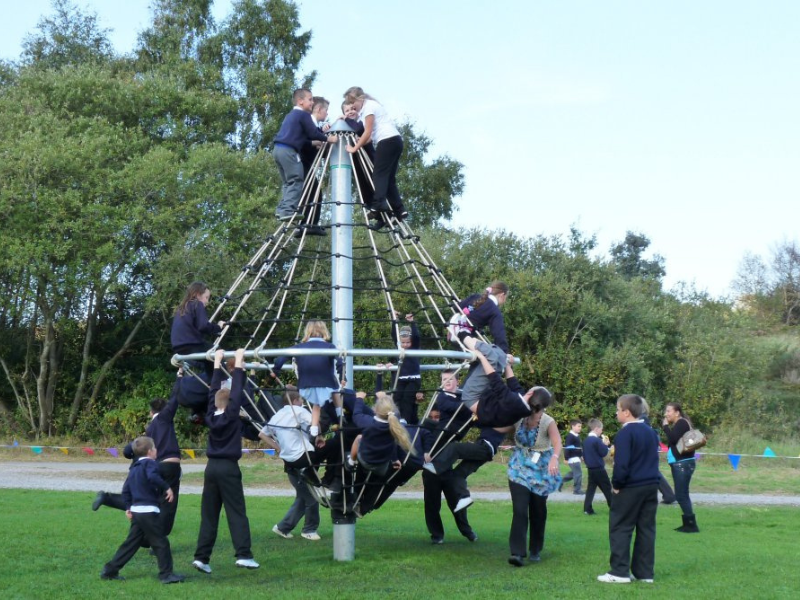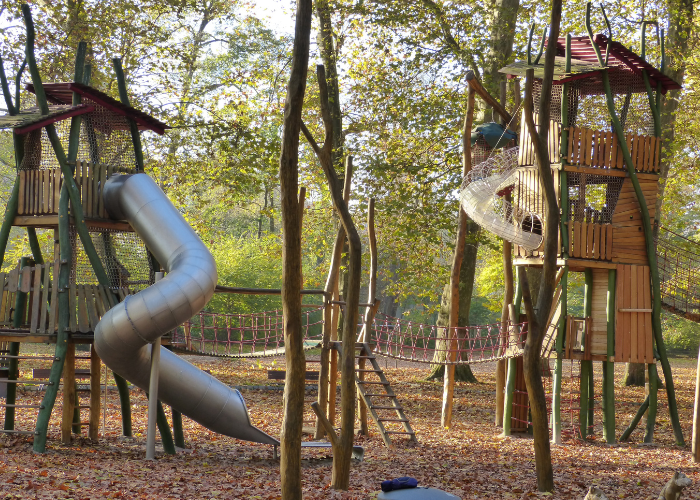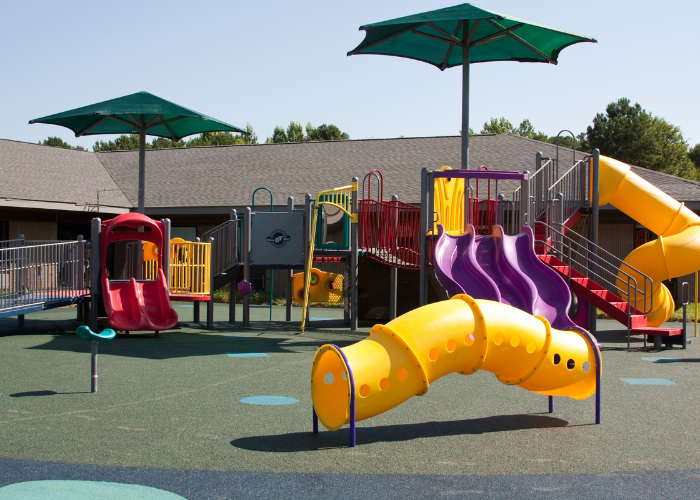School Playground Rules & Regulations You Need to Know
School playground rules and regulations don’t just apply to the students – they also play a crucial role in the design of a playground.
From Health & Safety Acts to BS EN1176 standards, there are a number of rules and regulations that must be followed when designing a school playground (or any playground for that matter).
While your playground supplier should be aware of and adhere to these regulations, it’s important for school officials to have an understanding of them as well.
To help you get a better understanding of exactly what regulations you need to be aware of, we’ve outlined some key points below, along with our advice on how you can facilitate playground safety in your school.
Legal Regulations All Playgrounds Need to Adhere to in the UK:
|
*All equipment and surfacing should adhere to these safety standards in school and community parks. All Huck Play equipment adheres to these standards.
Revamp Your Playground With Our End-to-End Service
School Playground Safety Regulations UK Schools Must Follow
School playground safety regulations and legislation in the UK are vital to ensuring children can play safely while minimising potential risks.
1. Health & Safety at Work Act 1974
School playground safety regulations and legislation in the UK are vital to ensuring children can play safely while minimising potential risks.
Schools must comply with the Health and Safety at Work Act 1974, which mandates that the working environment is safe and without risks to health. This includes maintaining playground areas and equipment to prevent accidents and injuries.
2. Management of Health & Safety at Work Regulations 1999
The Management of Health and Safety at Work Regulations 1999 requires schools to conduct risk assessments for playground activities to mitigate hazards.
|
Read more: How Long Does Playground Equipment Last? When to Replace or Update Structures |
3. Occupiers' Liability Act 1957 & 1984
Under the Occupiers' Liability Act 1957 & 1984, schools are responsible for ensuring that playground premises are reasonably safe for children.
4. Children’s Act 1989
The Children’s Act 1989 emphasises the duty to safeguard the welfare of children, which extends to play areas, including the playground design stage, as well as maintenance and supervision.
5. British & European Safety Standards (BS EN 1176 and 1177)
Adhering to British and European safety standards, specifically BS EN 1176 and 1177, is crucial as these standards provide guidelines for equipment and surfacing to ensure safety in school playgrounds.
Schools must regularly inspect and maintain equipment, provide adequate supervision, and ensure all staff are trained to handle emergencies, thereby creating a secure and enjoyable environment for children.
6. Play Safety Inspection Scheme (PSIS)
The Play Safety Inspection Scheme (PSIS) is an important program to keep playgrounds safe and well-maintained across the UK. It provides a guide for regularly checking and assessing playground equipment and surfaces to spot any hazards that could harm children.
Run by the Royal Society for the Prevention of Accidents (RoSPA), PSIS offers a certification for inspectors trained and tested against specific safety standards.
By following PSIS guidelines, schools, parks, and community playgrounds can uphold high safety standards, ensuring equipment is fun and safe for kids of all ages.
|
Read more: How Often Should Playground Equipment Be Inspected? Our Guide to Safe Play |
7. Local Authority Regulations
Schools must also follow additional rules set by their local authority, which can differ based on specific council guidelines. These local rules might cover playground planning and design, environmental factors, and noise control.
Local authorities are key in ensuring playgrounds meet community needs and maintain safety standards.
Therefore, schools need to stay updated on local regulations and incorporate them into their playground maintenance and design plans to comply with them and ensure a safe play area for children.
How to Maintain School Playgrounds to Legal Standards
To keep playgrounds up to legal standards, schools need a thorough and proactive approach.
Risk Assessments
This starts with regular risk assessments, which are crucial for spotting potential hazards and implementing measures to address them.
Schools should carry out these assessments regularly, especially after significant weather changes or equipment updates.
School Playground Risk Assessment Checklist
|
Here's a basic risk assessment checklist to inform your processes: General Surface Condition:
Play Equipment Safety:
Structural Stability:
Pathways and Access:
Supervision Guidelines:
Environmental Hazards:
Signage:
Fencing and Boundaries:
First Aid and Emergency Procedures:
Maintenance and Record Keeping:
|
Playground Inspections & Maintenance
Alongside internal inspections, professional annual inspections by certified experts are vital.
These experts can thoroughly evaluate playground equipment and surfaces to ensure they meet British Standards (BS EN 1176 and 1177). Their expertise can catch issues that might be missed during routine checks, ensuring the playground meets safety requirements.
Schools should establish and follow strict maintenance procedures.
This includes fixing wear and tear, tightening loose parts, replacing worn materials, and ensuring all structural elements are secure and functional. Regular maintenance not only prolongs the life of playground equipment but also reduces the risk of accidents.
School Staff Training
Staff training and awareness are crucial as well.
Staff should know emergency procedures and have first aid training to handle incidents quickly.
Encouraging staff to report safety concerns immediately allows for quick action before small issues become big problems.
Keeping Records & Documentation
Finally, keeping accurate records of inspections, maintenance activities, and any incidents is important. This documentation helps guide future safety improvements and serves as proof of due diligence if legal issues arise.
School Playground Safety Best Practices
There are a few additional best practices that aren’t legally required but make adhering to legislation much easier.
- Risk Assessments: Regularly conduct risk assessments to identify potential hazards and implement control measures.
- Equipment Safety: Ensure that all playground equipment is regularly inspected, maintained, and complies with relevant safety standards.
- Surface Safety: The playground surface should be appropriate for the type of equipment and activities and provide adequate shock absorption.
- Supervision: Adequate supervision should be provided, especially during peak usage times.
- Emergency Procedures: Have clear emergency procedures in place and ensure staff are trained in first aid.
- Inclusive Play: Consider the needs of children with disabilities and ensure the playground is accessible to all.
- Regular Inspections: Conduct regular inspections of the playground to identify and address any safety issues promptly.
|
Read more: Find out how investing in innovative primary school playground equipment can boost the health and development of children in your school. |
How Children Can Get Hurt On Playgrounds
Children can get hurt on playgrounds in several common ways, mainly due to falls, collisions, improper use of equipment, or getting trapped.
- Falls are the most frequent cause of injuries, often happening when kids climb on equipment that's too high or not suitable for their age.
- Collisions can occur when children bump into each other or equipment, usually because of overcrowded or poorly designed spaces.
- Entrapment happens when a child gets stuck in small gaps or openings on the playground.
To reduce these risks, playgrounds should have age-appropriate play structures with safety surfacing, like rubber mats or engineered wood fibre, to cushion falls. Proper spacing between equipment ensures clear movement areas and reduces collisions.
Ensuring playground equipment meets safety standards, with appropriate gap sizes and openings, prevents a child's head or limbs from getting trapped.
Regular maintenance and inspections are essential to keep equipment safe and free from defects that could cause injury.
Explore the Best Outdoor Play Equipment for Schools
Summary: Follow Play Equipment Safety Standards With Huck Play
Your school can meet play equipment safety standards by choosing Huck Play. Our equipment is guaranteed to be in line with British Standards BS EN 1176 and 1177, ensuring each piece is designed and made for safety and durability.
By using our reliable equipment, your school can create a safe playground environment where children can play freely while complying with all necessary safety regulations.
Contact our sales team today to find out how our end-to-end service can help your school create an engaging and safe playground for your students.
FAQs
Are There Common Law School Playground Rules & Regulations?
While there are no common laws, UK playgrounds must comply with British Standards BS EN 1176 and 1177, addressing safety and design guidelines. Schools often establish additional rules tailored to their specific environments to enhance supervision and minimise risks.
Are Playground Inspections a Legal Requirement?
Yes, playground inspections are legally required in the UK. Conduct regular inspections to ensure compliance with safety standards BS EN 1176 and 1177. Schools must maintain thorough inspection records to demonstrate adherence to legal safety obligations and standards.
Who is Responsible for School Playgrounds?
The responsibility for school playgrounds falls primarily on the school's administration. They must ensure safety standards are met, conduct regular inspections, and maintain records. They may also delegate specific tasks to trained staff or hire professional inspectors when necessary.
What Are the Surface Guidelines for Playground?
British Standards BS EN 1176 and 1177 specify that playground surfaces should be made of impact-absorbing materials like rubber mats or wood chips, reducing injury risks. Surfaces must also be well-maintained, and their depth should be appropriate for the equipment's fall height.


